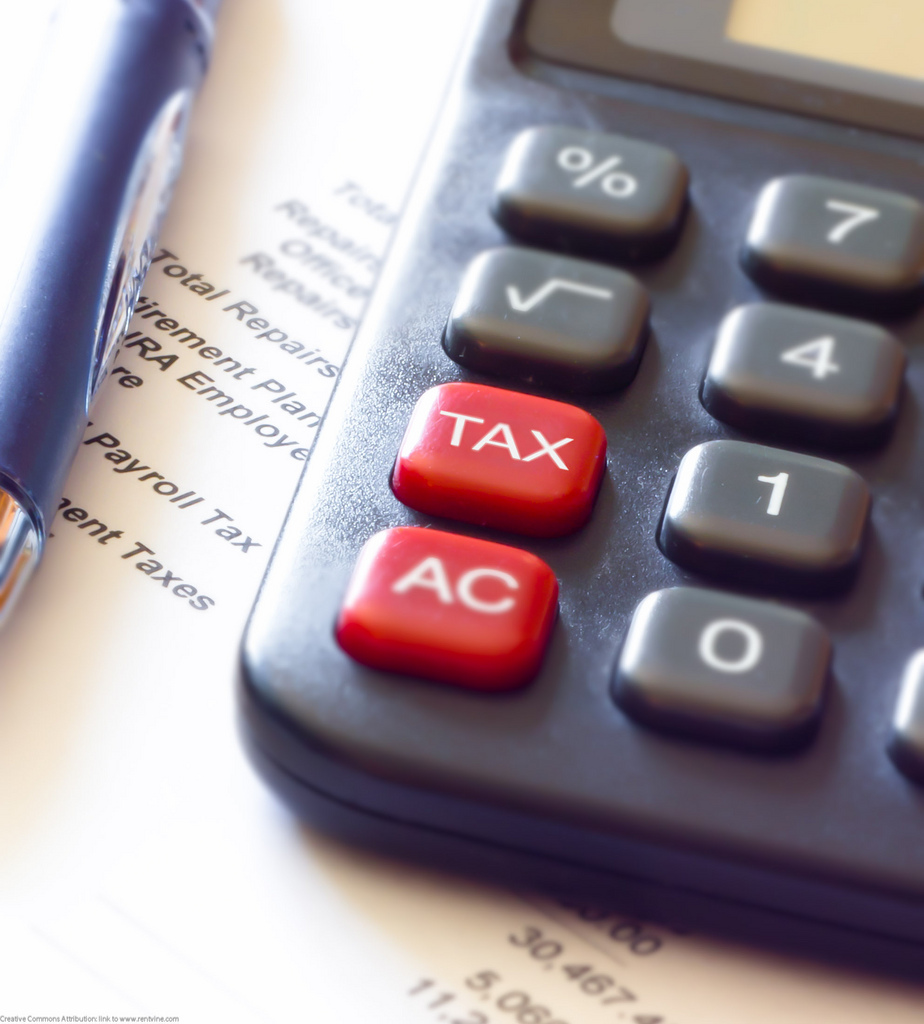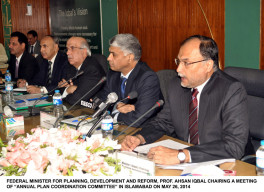
After two years of modest growth, the government is looking to make the most of the coming fiscal year and also approved the 5.5% growth rate target, hoping that an improved supply of energy and a relatively competitive exchange rate will aid the progress.
The Annual Plan Coordination Committee (APCC) on Tuesday approved major macroeconomic targets, some of them ambitious but necessary to create jobs in an economy that the government claims has stabilised after two years of tight economic and fiscal policies.
However, sector-wise growth rates are subject to risks like deterioration in energy availability, extreme weather fluctuations, non-implementation of envisaged reform programmes and fiscal profligacy, according to the proposed Annual Plan 2015-16 that will now be tabled in front of the National Economic Council (NEC). The plans also suggest tackling circular debt aimed at ensuring sustainable economic growth rate.
“The outlook for fiscal year 2015-16 portends a significant recovery in growth momentum and trajectory amidst wide ranging challenges including persistent energy shortages, supply side constraints, inefficiencies of production, further reduction in fiscal deficit by mobilising additional revenues and demand for structural reforms besides security challenges,” the proposed annual plan reads.
Similarly, regaining macroeconomic stability and adequate investments are critical for improved growth prospects and enhancing job creating ability of the economy, it added. The constraining factors such as lack of structural reforms, high fiscal deficit and accommodative monetary policies are no more desirable as they have serious consequences for inflation, balance of payments and foreign exchange reserves.
The economic growth that stood at 4% in the last fiscal year marginally grew to 4.2% in the outgoing fiscal year. However, the government has decided to ease some of the constraints to achieve the 5.5% growth rate in the next fiscal year.
The industrial and services sector are expected to steer the economy to higher growth trajectory whereas the agriculture sector will continue its modest growth in the short-run unless major changes in cultivation techniques are adopted.
The agriculture sector is targeted to grow by 3.9% on the basis of expected contribution from major and small crops. For the next fiscal year, the government has estimated a 6.4% growth in the industrial sector on the back of better energy supply and investment in China-Pakistan Economic Corridor (CPEC) projects. Improved energy supply is expected with the import of Liquefied Natural Gas (LNG). Likewise, some energy related fast-track projects under CPEC are expected to be completed in the next fiscal year.
The services sector is targeted to grow by 5.7% with the contribution of transport, storage and communication, wholesale, retail trade, finance, and insurance sectors.
For the next fiscal year, the underlying assumption for inflation is 6%, which is consistent with fiscal prudence, stable exchange rate and responsive monetary policy.
Fiscal and monetary policy
According to the annual plan, the strategy of monetary policy during the next fiscal year will focus on price stability and provide support to economic growth by improving implementation of monetary policy and the operational framework. The monetary expansion will be in line with the projected gross domestic product (GDP) growth rate of 5.5% and inflation rate of 6%.
The government has planned to build on the gains of the current fiscal year and will focus on fiscal prudence. It has planned to curtail budget deficit by mobilising additional revenues, controlling current spending by switching to more targeted subsidies and prioritising development spending for critical sectors. The budget deficit is targeted at 4.3% of the GDP.
Savings and investments
The investment is targeted to improve from the current level of 15.1% of the GDP to 17.7% - an ambitious goal of 2.6% of the GDP in a single year. The increase in investment will be primarily contributed by the private sector while the public sector will continue to play the supporting role. Fixed investment is projected to grow from 13.5% to 16.1% of the GDP.
According to the APCC, the inadequacy of national savings to finance investment has always led to increased dependence on foreign savings. However, national savings are now expected to improve from 14.5% of the GDP to 16.8%.
Balance of payments
The trader outlook for 2015-16 is encouraging due to the optimism prevailing on account of better availability of energy supplies due to completion of various projects, according to the annual plan. It is also expected that a competitive exchange rate will improve the competitiveness of the export sector.

Exports are estimated to grow to $25.5 billion in the next year – up by 5.5%. Imports during 2015-16 are projected to grow by 6% to $43.3 billion against this year’s $40.8-billion imports. The trade deficit is estimated at $17.7 billion for the next fiscal year.
The current account deficit is projected at $2.8 billion in 2015-16 or almost 1% of the GDP.
Published in The Express Tribune, May 27th, 2015.
Like Business on Facebook, follow @TribuneBiz on Twitter to stay informed and join in the conversation.

























1714131462-0/WhatsApp-Image-2024-04-26-at-4-21-45-PM-(1)1714131462-0-270x192.webp)



1714129906-0/Clint-Eastwood-(1)1714129906-0-270x192.webp)











1714024018-0/ModiLara-(1)1714024018-0-270x192.webp)









COMMENTS
Comments are moderated and generally will be posted if they are on-topic and not abusive.
For more information, please see our Comments FAQ